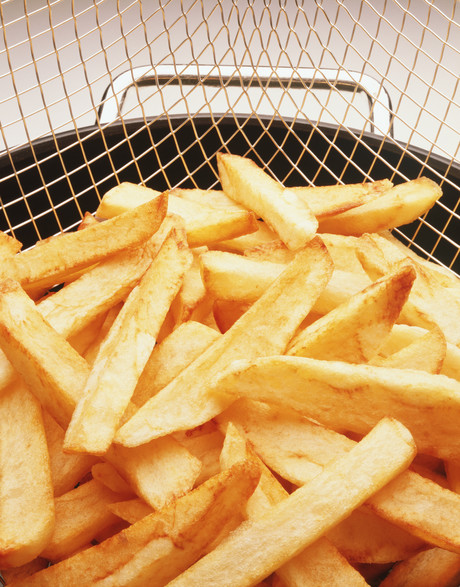Space Station research finds solution to smelly fryers

Unpleasant odours from deep-fat frying could soon be a thing of the past, thanks to experiments conducted on the International Space Station.
Cooking food such as French fries in hot fat or oil releases malodorous molecules that are extremely hard to remove or disperse. These odours are typically destroyed in bulky and expensive commercial cooker hoods by chemicals that create ozone as a by-product — which must be removed because of health concerns.
German deep-fat fryer manufacturer Blümchen is taking a different approach, based on plasma experiments that have been running on the Space Station since 2001.
Plasma is usually a hot, electrically charged gas, but it is possible to create ‘cold plasmas’ at room temperature. Cold plasma has proved to be an extremely effective bactericidal agent and can also tackle fungi, viruses and spores. It is safe to touch, which makes it attractive for many applications.
Funded by the European Space Agency (ESA), scientists led by Professor Gregor Morfill took advantage of weightlessness in orbit to study complex plasmas, which provided the impetus to develop the cold plasma technology.
A grant from ESA has helped to transform the knowledge into practical applications on Earth. Since 2013 Professor Morfill has been CEO of Terraplasma, which has already applied the cold plasma to medical and hygiene problems and to water treatment.
To remove odours, Terraplasma’s system generates the plasma by sparking a glowing electrical discharge in the air between a short rod electrode sitting in the middle of a cylindrical electrode. The discharge is initially a narrow line about 1 mm thick somewhere between the electrodes, but when it is made to move rapidly by a magnetic field it spreads out to produce a plasma disc. The foul air is then passed through this disc for cleaning.
“The new design works by using electrons within the plasma to neutralise odours,” explained Professor Morfill.
“It’s also about a thousand times faster than the traditional chemical method.”
Chocolate consumption trends in the US
Chocolate sales hit a new high in the US as it remains an 'affordable treat' duing...
Ready-made infant, toddler food study finds some falling short on nutrition
Some ready-made foods for infants and toddlers being sold in Australia are not meeting WHO...
PepsiCo achieves 3.5 Health Star Rating with chip ranges
PepsiCo Australia has achieved a 3.5 Health Star Rating (HSR) for its low-salt and baked potato...














